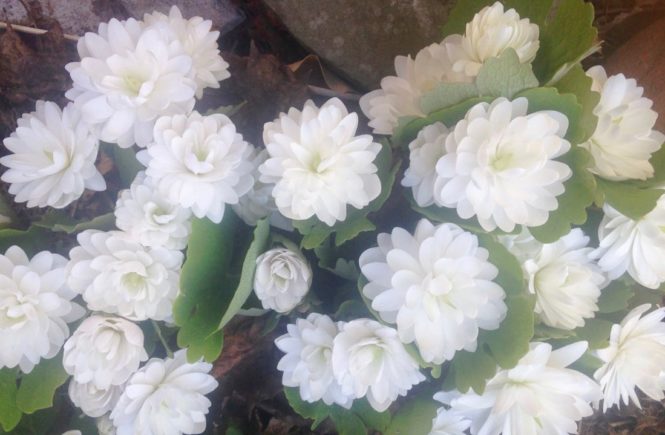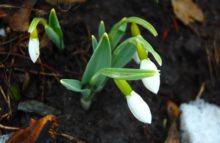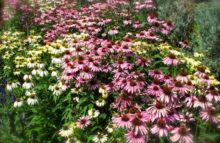Every spring, a small, white, puffy flower explodes on the shady north side of my garden – and every year, it’s pure excitement, all over again. It never fails, and it never fails me.
In fact, this double version of the native Sanguinaria canadensis has multiplied constantly, ever since it came as a gift from Cold Climate Gardening blogger Kathy Purdy.
It’s variously called Sanguinaria canadensis f. multiplex ‘Plena’ [Ed: link updated] or S. canadensis ‘Flore Pleno’ – by any name, though, it calls to me each spring. How about you?





14 comments
the site says this plant is hardy to zone 7 & most of the GTA is zone 5 isn’t it? you must have it planted in its own little eco system in order to thrive as perennial!
Ha. It just goes to show: Plants don’t read websites or garden books! The double bloodroot grows quite well in USDA Z5 (Canadian Z6) in my garden, and I know of a US-Z4/C-Z5 gardener outside the city who grows it as well! Let that be a lesson to us.
Simply gorgeous! How long do the flowers last? I often say that plants can’t read zone maps so when it says that I’m in zone 5 and zone 6 is a few km down the street, I pshaw.
Margaret, the double flowers tend to last longer than the singles. They started popping open on the weekend, and I expect them to go on for equally as long. But in truth I’ve never actually timed them, so will report back with an accurate number.
We love this plant and have a small clump that blooms in Markham each spring
Perfect, Sue, you’ve confirmed my suspicions about its hardiness.
What a lovely plant; really should be used more.
I agree totally, Nic.
I just saw this; I’m glad it’s doing well for you. It’s just as hardy as the single bloodroot–whoever said it was hardy to zone 7 (U.S. or Canadian) is just cray-cray.
Thanks again for the gift that keeps on giving, Kathy. I don’t know what that resource was thinking.
Any idea if double bloodroot will grow in Banff AB. I have just discovered this plant
Hi, Ruth! I did a quick search for the hardiness tolerance of Sanguinaria canadensis which showed up as USDA Z3 (roughly equivalent to Canadian Z4). Also searched for the Canadian horticultural zone for Banff, which appears to be colder than that at Z 2b-3a. See here: http://www.planthardiness.gc.ca/?m=22&lang=en&prov=Alberta&val=B
However, in my experience, hardiness of a plant can relate to many things, including the reliability of snow cover. That’s why we in Toronto often find that particular plants fail, despite that they are *supposed to be* hardy for us, while people outside Toronto (in a colder zone) succeed with them. They get reliable snow cover, and we don’t. Based on that, I might suggest you give it a try.
But why not ask gardeners in your region what they think? For example, the Calgary Horticultural Society might be a good place to start: https://www.calhort.org
I hope you get a thumbs-up from them. It’s a beautiful plant.
But the bloodroot plant is poisonous! Aren’t you afraid child may come in contact with it? Where can one find one if one wants it?
You’re right, Peter. Bloodroot can be toxic if eaten and the red sap from the roots can cause irritation. But many “ordinary” garden plants show up on toxic lists – for example, this link to the Ontario Poisons Centre. Caution, indoors and out, is always smart when younger kids are around.
Anyway, double bloodroot isn’t easy to find, but if you google the plant “for sale *your city*” (like I just did) you might find a local source (like I just did). If you’re in Toronto area, sometimes Marion Jarvie has some divisions to sell during her open gardens – check her website. Good luck!